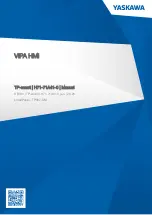
Pul-Blast
AR pump system
18
Manual controls
Lid basket strainer
Line to handgun
and pressure gauge
Discharge strainer
Right Manifold
Left Manifold
Dump valve
Suction strainer
Suction valve
Centrifugal pump
Hu-valve
see below
Tank return line
Tank return line
Motor actuated
valve
pulblast plumbing
pulblast electric spray controls
HUV500 operator block
In
fig i, above
, the Hu-Valve is closed. You have switched
off
your manifold using your handset (electric or manual
controls) and what this does, quite simply, is close the
return line from the Hu-Valve to the tank. When you switch
your manifold
on, fig ii
, water from the pump flows into the
Hu-Valve and splits into two channels: the majority flows
through
A,
into
B
, and on to the manifold; a lesser amount
through
C
to the return line. From
C
the water passes
through an orifice and back to the tank. It is this return
line that feeds chamber
D
. When the return line to the
tank is open, the water pressure in chamber
D
is low- lower
Orifice
From
Pump
Return Line
(closed)
Diaphragm
C
A
D
Orifice
From
Pump
To manifold
Return Line
(open)
Diaphragm
C
B
D
A
fig i
fig ii
than the pressure in chamber
A
, the valve seat. The greater
pressure in
A
displaces the diaphragm,
fig ii
, and opens the
passage to the manifold: the valve is open.
When you switch your manifold
off
the return line to the
tank is closed,
fig i
, and water backs up into chamber
D
,
equalizing the water pressure in
A
and
D
. The diaphragm
will close the valve because chamber
D
has a mechani-
cal advantage over
A
: the pressurized surface area of the
diaphragm on side
D
is 10 times greater than that of side
A
.
Pump
CHEMICAL CONTAINERS INC.
800 346 7867
















































